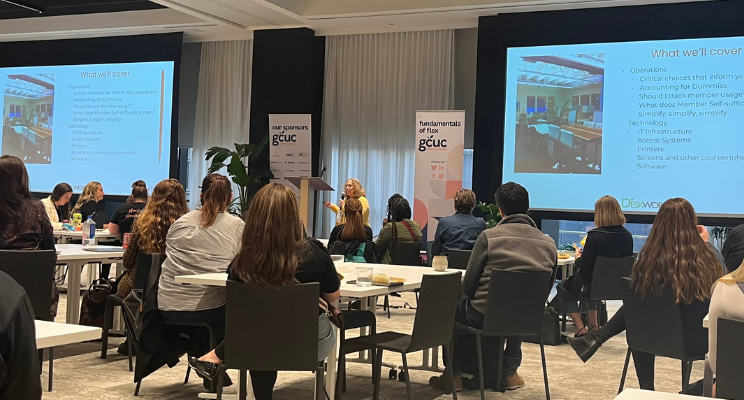How an Unconference Became a Conference

I recently returned from GCUC, the Global Coworking Unconference Conference.
Only the Unconference looked remarkably like a conference. What changed?
What changed is that we’re looking at an industry growing up.
When GCUC started, coworking was meeting a new need. Knowledge workers could work anywhere, but kitchen tables and Starbucks were less than ideal. Human beings needed at least a semblance of community, of working with or near others. Ad hoc spaces popped up, basically extra spaces with long tables. Then conference rooms and a few private offices were added on, and maybe phone cubes for quiet phone or video chats.
There were no experts, so how could you have a conference? It was 2009, and we were figuring it out as we went along. And the Unconference format that GCUC started in this field perfectly matched the growing creativity of the industry! People put up their burning questions on a wall with big post-its, then the organizers grouped people into sections to discuss the topics of most interest to them, trying to develop best practices. This was a mission-driven effort of equals. There was less focus on profitability and more focus on improving communities and quality of work and life for people.
Roughly fifteen years later, we’re seeing a vastly different mix of who is in this field, and who is starting to dip their toe into it. There are now franchises, corporations with multiple large centers, regional operators, large and small property owners getting into the field, as well as the original community-based center operators now operating profitably in single centers or three to five centers in an area. There are successful centers of 3,000 s.f. and successful centers of 35,000 s.f. There are multiple models that work.
And yes, there are now experts. There are people you want to listen to and learn from, up on a stage. I’m sad that the Unconference format may not have a place moving forward, but I get it.
Since the pandemic, more commercial property owners and managers are testing the waters. They’re coming from a hands-off, long-term, 40-page lease mindset since a large piece of their potential clients now demand short-term, full-service, flexible agreements. We’re seeing corporations reducing their corporate footprint and looking for third spaces for their employees on part-time bases — and the commercial property industry knows it needs to understand and address this.
Mindset shifts are really difficult — but we’re all getting used to doing them faster and faster. And the partnership between the mission-driven founders in the industry and the more business-focused new entrants can only make coworking a very long-term, sustainable and truly necessary improvement for how we work, how we improve our communities, and how we live.
All of these different mindsets and frameworks coming together, synthesizing, can only make this industry stronger and better. The growth of coworking demonstrates the true positive trajectory of a dream.






